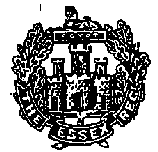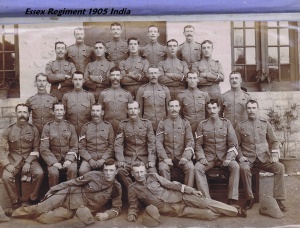44th Regiment of Foot: Difference between revisions
m Image added |
|||
| Line 43: | Line 43: | ||
*[http://web.archive.org/web/20071228194647/http://www.regiments.org/regiments/uk/inf/044Essex.htm The Essex Regiment] including deployments: [http://web.archive.org/web/20080113181810/http://www.regiments.org/deploy/uk/reg-inf/044-1.htm 1st Battalion], [http://web.archive.org/web/20071221233610/http://regiments.org/deploy/uk/reg-inf/056-1.htm 2nd Battalion] Regiments.org, an archived site | *[http://web.archive.org/web/20071228194647/http://www.regiments.org/regiments/uk/inf/044Essex.htm The Essex Regiment] including deployments: [http://web.archive.org/web/20080113181810/http://www.regiments.org/deploy/uk/reg-inf/044-1.htm 1st Battalion], [http://web.archive.org/web/20071221233610/http://regiments.org/deploy/uk/reg-inf/056-1.htm 2nd Battalion] Regiments.org, an archived site | ||
*[http://www.chelmsfordbc.gov.uk/index.cfm?articleid=6780 The Essex Regiment Museum] Chelmsford Borough Council | *[http://www.chelmsfordbc.gov.uk/index.cfm?articleid=6780 The Essex Regiment Museum] Chelmsford Borough Council | ||
*[http://www.royalanglianmuseum.org.uk/essex.html Royal Anglian Regiment Museum] www.royalanglianmuseum.org.uk | *[http://www.royalanglianmuseum.org.uk/essex.html Royal Anglian Regiment Museum] www.royalanglianmuseum.org.uk. Covers the Royal Norfolk Regiment ([[9th Regiment of Foot|9th Foot]]), the Royal Lincolnshire Regiment ([[10th Regiment of Foot|10th Foot]]), the Suffolk Regiment ([[12th Regiment of Foot|12th Foot]]), the Bedfordshire and Hertfordshire Regiment ([[16th Regiment of Foot|16th Foot]]), the Royal Leicestershire Regiment ([[17th Regiment of Foot|17th Foot)]]), the Essex Regiment (44th/ [[56th Regiment of Foot|56th Foot]]), and the Northamptonshire Regiment ([[48th Regiment of Foot|48th]]/ [[58th Regiment of Foot|58th Foot]]) | ||
**[http://www.royalanglianmuseum.org.uk/essex.html The Essex Regiment (44th/56th Foot)] | |||
*[http://www.britishbattles.com/first-afghan-war/kabul-gandamak.htm Retreat from Kabul 1842] British Battles website | *[http://www.britishbattles.com/first-afghan-war/kabul-gandamak.htm Retreat from Kabul 1842] British Battles website | ||
Revision as of 09:18, 1 January 2012

The Essex Regiment known as The Pompadours
Chronology

- 1741 raised as James Long's Regiment of Foot (ranked as the 55th Regiment of the Line)
- 1748 re-ranked as the 44th Regiment of the Line
- 1751 renamed the 44th Regiment of Foot
- 1782 became the 44th (East Essex) Regiment of Foot
- 1881 amalgamated with the 56th (West Essex) Regiment of Foot to become 1st Battalion Essex Regiment
- 1958 merged with the Bedfordshire and Hertfordshire Regiment to form the 3rd East Anglian Regiment (16th/44th Foot)
- 1964 became 3rd Battalion of the new Royal Anglian Regiment
- 1992 3rd Battalion disbanded
Campaign Actions
Battle of Bemaru 1841
Battle of Gundamak 1842
Battle of Sinho 1860
Battle of Taku Forts 1860
History
| The information in this section has been extracted from a number of sources, including Thomas Carter's 'Historical Record of the Forty-Fourth or the East Essex Regiment of Foot' (1864), John W. Burrows' 'The Essex Regiment : Short History and Chronology' (undated, but after World War One), 'The British Army of 1914' and various War Office documents such as Muster Rolls and pension records. |
The regiment has a distinguished history, having fought at Waterloo in 1815 and throughout the Crimean War 1854-1856, as well as numerous other famous and not-so-famous battles. However, as this website is primarily concerned with family history in India, only the India-related history will be recounted.
The regiment formed the rearguard of the British Indian Army on the retreat from Kabul during the 1st Afghan War. There were only eight survivors from the last stand at Gundamak. The regiment had to be reconstituted for the Crimean War.
In consequence of the Indian Mutiny, reinforcements had to be sent to all the Presidencies at short notice. The 44th had not long returned to England from the Crimea when it was selected as one of the regiments to reinforce India. On 26th August 1857 the regiment embarked for Madras, arriving on 12th January 1858. The women and children were left at home. During the years 1858 and 1859, the regiment remained at Fort St George, Madras, from whence it proceeded on active service.
War with China (2nd China War) had broken out, owing to the Emperor refusing to ratify the treaty which had been signed two years previously by his ministers at Tien-Tsin. In this campaign, as in the Crimea, the French and British forces acted together. The 44th embarked for China on 31st January 1860. The women and children of the regiment arrived at Madras, from England, after the first detachment had departed, and were again left behind.
After landing at Kowloon, on the mainland opposite Hong Kong, the 44th proceeded on 15th May to the north of China, leaving the 'weakly men' behind at Hong Kong. On 16th June the regiment arrived at Talienwhan Bay, near the entrance of the Gulf of Pecheli, where the troops were employed in digging wells. The expedition re-embarked on 24th July and sailed for the Peiho River, and moved to the Pehtang River on 30th July.
The 44th took part in the capture of the Sinho entrenchments and the Battle of Taku Forts 1860, in which two Victoria Crosses were won. The attacking party of the 44th and 67th Regiments swam the ditch and tried to force an entrance by the gate, but without success. Some of them then climbed up the wall to an embrasure and also at a point to the right of the gate. Lieutenant Lenon of the 67th stuck his sword into the wall to enable Lieutenant Rogers of the 44th , who had been wounded, to enter the fort, the first British officer to do so. For this service, 'Taku Forts' was inscribed on the Colours.
The regiment returned to Fort St George, Madras. It was in Kamptee in Central India at least from 1876 to 1878, and then moved to Thyetmo in Burma in the first half of 1878. The Regiment was still at Thyetmo in 1881, when it was designated the First Battalion, The Essex Regiment, under which title it served in the South African War (1899-1902).
External Links
- 44th Foot Wikipedia
- Essex Regiment Wikipedia
- Royal Anglian Regiment Wikipedia
- 44th (the East Essex) Regiment of Foot including deployments Regiments.org, an archived site
- The Essex Regiment including deployments: 1st Battalion, 2nd Battalion Regiments.org, an archived site
- The Essex Regiment Museum Chelmsford Borough Council
- Royal Anglian Regiment Museum www.royalanglianmuseum.org.uk. Covers the Royal Norfolk Regiment (9th Foot), the Royal Lincolnshire Regiment (10th Foot), the Suffolk Regiment (12th Foot), the Bedfordshire and Hertfordshire Regiment (16th Foot), the Royal Leicestershire Regiment (17th Foot)), the Essex Regiment (44th/ 56th Foot), and the Northamptonshire Regiment (48th/ 58th Foot)
- Retreat from Kabul 1842 British Battles website
Historical Books Online
- Historical Record of the Forty - Fourth, or the East Essex Regiment of Foot by Thomas Carter 1864 Google Books. Indian service commences page 114 in 1822 in Calcutta
- Historical Record of the Forty-Fourth, or the East Essex Regiment by Thomas Carter updated 2nd edition 1887 Archive.org